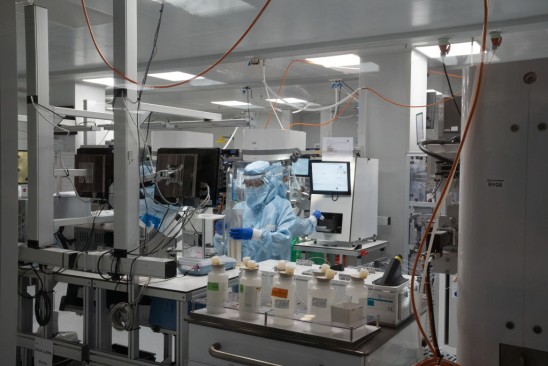Superconductor brings questions

A scientific breakthrough being hailed as “one of the holy grails of modern physics” is also raising some eyebrows, reports The Independent. New papers state that scientists in South Korea claim to have produced a new superconductor — a material that conveys electricity without losing energy to electrical resistance — that works at room temperature and ambient pressure. They say they have synthesized a new material called LK-99, which “would represent one of the biggest physics breakthroughs of recent decades.” However, many experts say that the work has not been peer-reviewed, the results have not been replicated and there could be other explanations for the “apparently astonishing behavior” described.
By Jessica Hartogs, Editor at LinkedIn News
Superconductor breakthrough could represent ‘biggest physics discovery of a lifetime’ – but scientists urge caution
Breakthrough would mark ‘holy grails of modern physics, unlocking major new developments in energy, transportation, healthcare, and communications’ – but it is a long way from being proven
The new papers, published in recent days as a preprint on the website arXiv, claims to have overcome that problem. The researchers said they had not only found a way to synthesise such a superconducting material, but also that it could be done relatively easily – leading to huge excitement on social media.
One Twitter thread from Alex Kaplan, a recent Princeton graduate who is now head of coffee product at startup Cometeer, helped propel the news into the mainstream. His thread had been viewed 8.5 million times, Twitter said, and has been retweeted more than 10,000 times.
“Today might have seen the biggest physics discovery of my lifetime. I don’t think people fully grasp the implications of an ambient temperature / pressure superconductor,” he wrote in a long thread that went on to explain the possible applications of the material.
Mr Kaplan pointed to the fact that vast amounts of energy are lost in the transmission of electricity across the world, that the the authors claimed material could be made in just 34 hours with simple equipment, and that such a superconductor would have revolutionary uses in everything from nuclear fusion reactors to batteries and quantum computers.
Scientists away from the work agreed that such a breakthrough would be hugely significant. But they urged caution, pointing to the fact that the paper has not yet gone through the peer review process, the results have not been replicated, and that there could be other explanations for the apparently astonishing behavior described in the work.
“A real, working room-temperature superconductor which works at ambient pressure would be one of the holy grails of modern physics, unlocking major new developments in energy, transportation, healthcare, and communications,” said Mohammad Yazdani-Asrami of the University of Glasgow’s James Watt School of Engineering.
“As it stands, however, the paper is not yet peer-reviewed and has not yet been tested in other labs to see if other researchers can reproduce its results. These are both key to determining for sure whether the world should be getting excited about the authors’ claims, which need much more scrutiny at this early stage. If the claims of findings are approved, perhaps, this is one of the most significant achievements of last few decades in physics and material engineering.”
Others voiced specific concerns about the paper. Some of the results meant that other researchers working on superconductors were not convinced by the claims made in the paper.
“The recent preprint by Lee, Kim and Kwon suggesting that they have observed room temperature superconductivity in the copper doped lead phosphate system, without the need for very high applied pressures, is interesting, but not yet wholly convincing,” said Susannah Speller, Professor of Materials Science at the University of Oxford, and Chris Grovenor, Professor of Materials at the University of Oxford.
Professors Speller and Grovenor pointed to the fact that the data did not show the behavior that would be expected to happen when the material became superconducting. Features that would be expected to be evident in the results were not, they said, and “and so it is too early to say that we have been presented with compelling evidence for superconductivity in these samples”.
John Durrell, professor of superconductor engineering at Cambridge University, said that it could take considerable time to see the practical benefits of the breakthrough, even if the team’s results were confirmed.
“There will be understandable skepticism about this result in the community as there have been numerous reports of room temperature superconductors over the years which have not held up,” he told The Independent. “I would, therefore, personally withhold judgement on this work until it becomes clear if the result is reproducible in other laboratories.
BY: Andrew Griffin, INDEPENDENT





